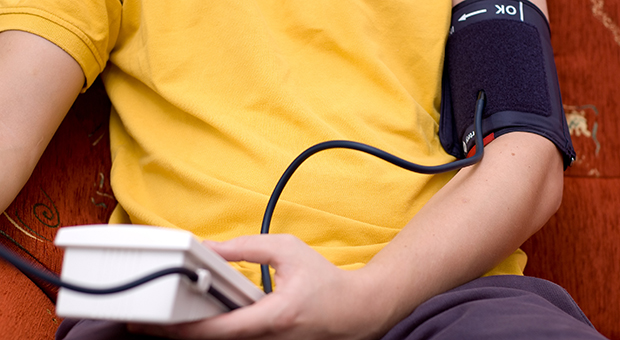The Medical Minute: Knowing ‘the right way’ to check blood pressure

For millions of Americans, checking blood pressure is not something reserved for an annual medical visit. Because one in three American adults suffers from high blood pressure, regular and accurate blood pressure checks are important for correctly diagnosing and treating hypertension.
Dr. Robert Zelis, a cardiologist at Penn State Milton S. Hershey Medical Center, says there are three groups of people who may want to consider checking blood pressure on their own, outside of a medical setting.
The first is those with so-called “white-coat hypertension” – patients who get so worked up about being in a doctor's office that their readings will always be skewed there.
The second is those who already take medication to control their blood pressure and need to monitor how it's working.
The third is those who suffer from chronic conditions such as diabetes or high cholesterol – or who have risk factors such as obesity, smoking or a strong family history of hypertension.
Whether a blood pressure check is done at the doctor's office or at home, it's important to follow the same procedure:
- Make sure the blood pressure cuff is large enough and easy to use.
- Sit in a chair with a straight back, with both feet flat on the ground. Your legs should not be crossed.
- Make sure your arm is supported on something – a table, armrest, etc.
- Don't take a measurement with the cuff placed on top of clothing. Bare skin is best.
- Wait 30 seconds after sitting down before you take your measurement.
- Take a second reading 30 seconds after you have finished the first to confirm your initial results.
- Take the measurements at the same time of day.
- Record your results to spot patterns.
A panel of experts published new guidelines in the Journal of the American Medical Association in December recommending that the upper number of the reading – which records the peak flow of blood when the heart is pumping – be less than 150 for adults age 60 and older. For those younger than 60, it should still be less than 140.
The lower number of the reading – which records the flow of blood when the heart is resting – should be less than 90 for everyone.
Zelis suggests taking measurements in the morning and evening for two consecutive days and recording the results. Repeat the process every couple of weeks rather than daily.
“You can bring those numbers into the doctor's office so we have a bunch of readings to look at,” he says. “Nobody wants to have to do it every day.”
Patricia Williams-Forgenie, attending nurse at Penn State Hershey's I.O. Silver Cardiovascular Specialties Clinic, is leading an initiative to make sure everyone in the Penn State Hershey system adheres to the same standards when measuring blood pressure.
“It is one of the first and most basic skills we learn as healthcare professionals, but we are human, and so we sometimes deviate from the recommended standards,” she says. “Those readings are the basis for some decisions that physicians make for patient treatment, so if we are not measuring it correctly and consistently, we affect patient care.”
She suggests healthcare professionals and patients alike adhere to standards published in the Wisconsin Heart Disease and Stroke Prevention Program's Blood Pressure Measurement Toolkit.
To learn more about high blood pressure, visit the American Heart Association.
The Medical Minute is a weekly health news feature brought to you by Penn State Milton S. Hershey Medical Center. Articles feature the expertise of Penn State Hershey faculty physicians and staff, and are designed to offer timely, relevant health information of interest to a broad audience.
If you're having trouble accessing this content, or would like it in another format, please email Penn State Health Marketing & Communications.
